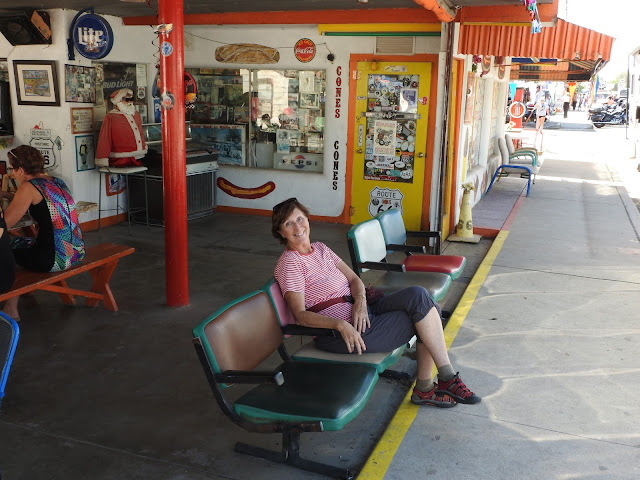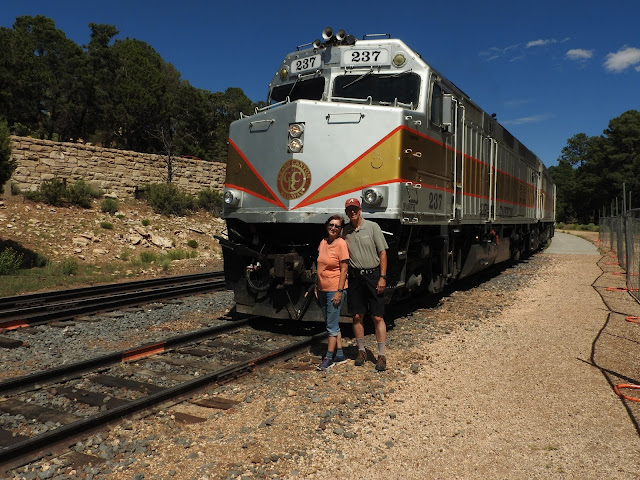Taking some time and exploring in the vicinity of the Grand Canyon, Susan and I discovered more along the Mother Road - Route 66. This highway was the first transcontinental road, winding from Chicago to Santa Monica, California. Route 66 helped lead people out of the Dust Bowl and to new lives in the golden state of the west - California.
Parks Grocery has been here since 1905 or so, greeting people headed west before there was even a Route 66.
This is some of the original highway, before I-40 bypassed the area.
Imagine families following their dreams as they pushed their way west. Not much of the original Route 66 remains. This was the last section bypassed by the interstates. Route 66 was officially decommissioned in 1985.
Along Route 66, we found Keyhole Sink and more petroglyphs. Native Americans used petroglyphs and pictographs to tell stories. There must have been a bear in this area; see the bear claw in the lower right corner?
Continuing west on Route 66, Susan and I headed to Grand Canyon Caverns. Where Old 66 leaves I-40 is Seligman, and these caves are about 50 miles west of Seligman. With all the limestone under us, it is natural that there would be a lot of caves and caverns in the Grand Canyon area. (This is about 120 road miles from the South Rim.) And if you've seen any of the CARS movies, you'll recognize Mater at home here at Radiator Springs.
Grand Canyon Caverns was a Civil Defense shelter back in the 1960s, and is still stocked with supplies...just in case.
On the way back, we stopped in Seligman at Delgadillo's Snow Cap. On a hot day, perfect place to enjoy a Butterscotch Milk Shake. Susan didn't want to leave (and neither did I)!
I had trouble figuring out how to get in the door!
As we enjoyed our shake, this was our view across old Route 66. No traffic...nothin' but time.
My "bread and butter" tours this year have been meeting the Grand Canyon Railway as it chugs up from Williams, AZ to the Grand Canyon Depot. So Susan and I thought we'd try it as well!
This is our cabin! Train goes right by here every day.
Very nostalgic. The train has been coming here since 1905.
Another fun day off. Next week, hiking into the Grand Canyon. Bright Angel Trail down to Indian Garden, then out to Plateau Point.

















































